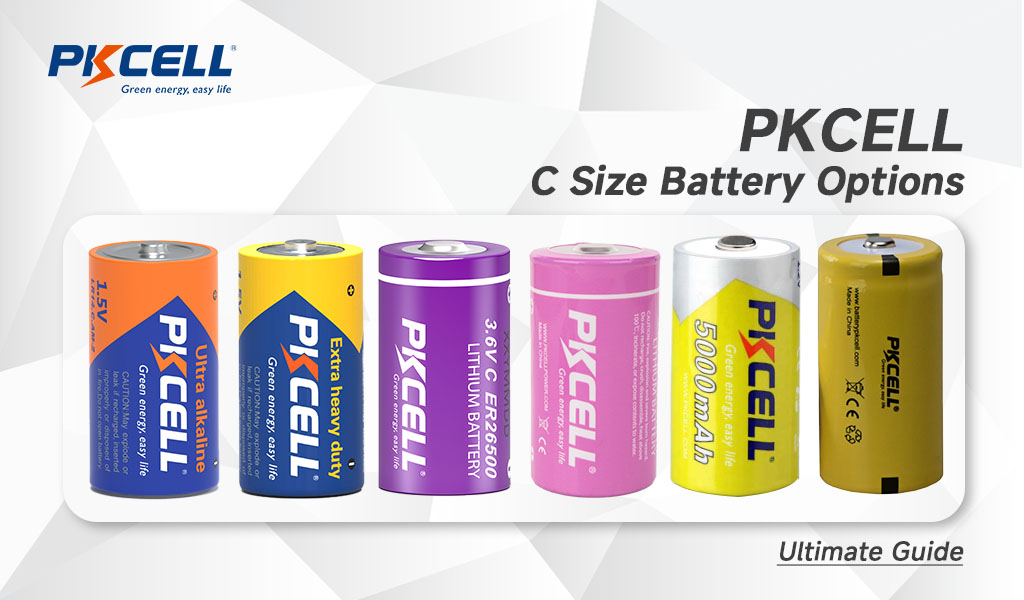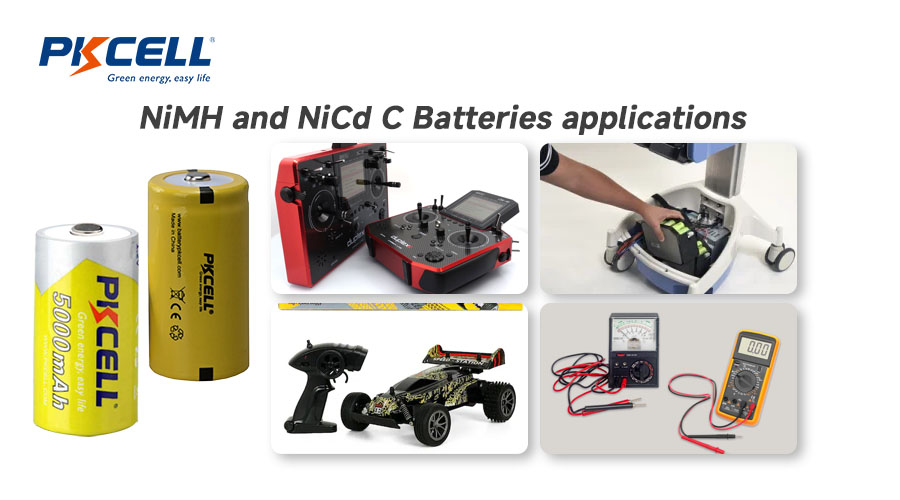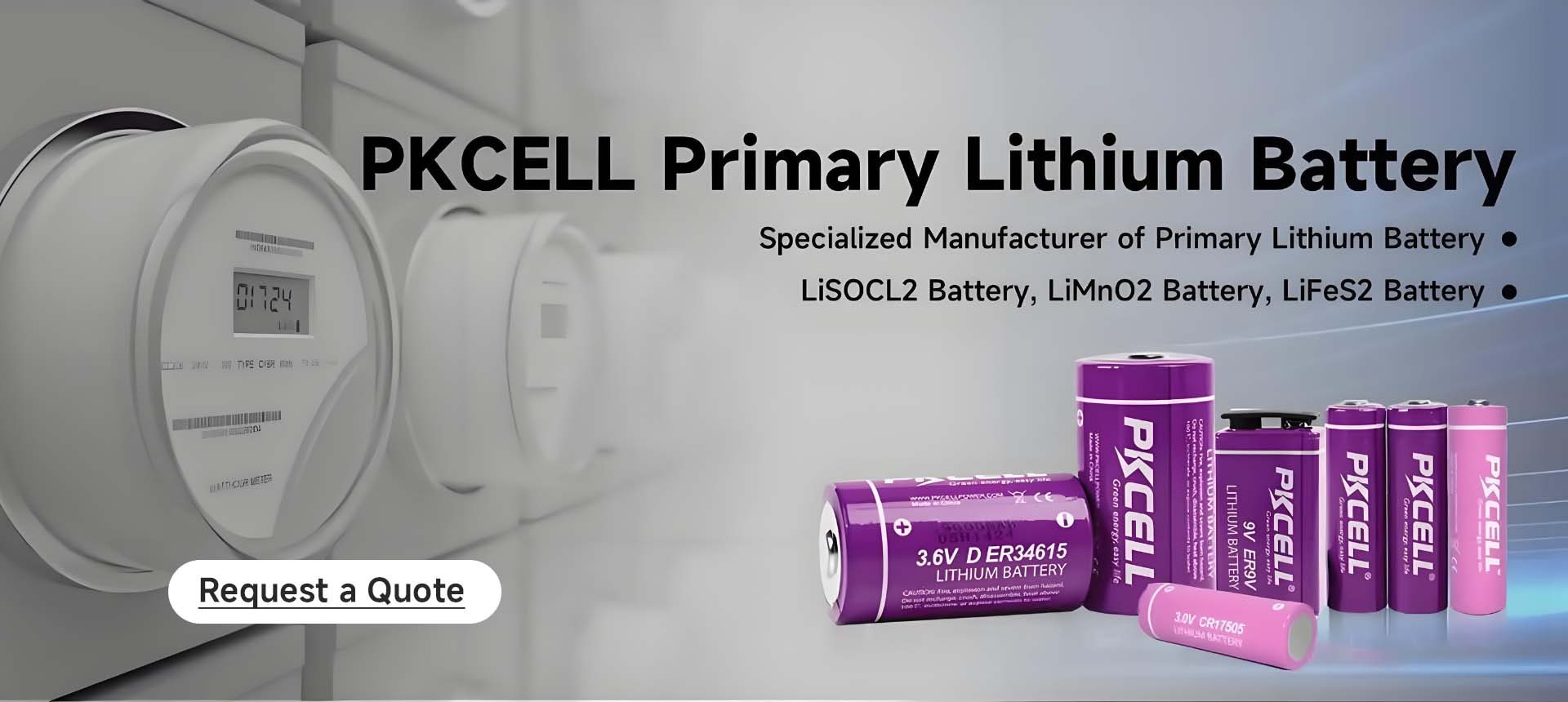Key Highlights
- C batteries can be used in many devices. They give steady power for things that need medium to high power.
- Alkaline C batteries have good storage capacity. Their long shelf life makes them great for devices you use every day.
- Rechargeable C batteries, such as NiMH and NiCd, allow for multiple uses, promoting greater environmental responsibility.
- Lithium non-rechargeable (LiSoCl2) C batteries are the best for things that use a lot of power. They stay at a stable voltage and last a long time on the shelf.
Introduction: What Is a C Size Battery
C batteries are mostly dry cell batteries. They are bigger than AA and AAA batteries, but smaller than D batteries. The size of these batteries is about 50mm long and 26.2mm in diameter. These are good to use in many things that need more power. You might see them in toys, radios, and medical gear. They use dry cell technology, so there is little moisture inside. This helps make them easy to carry with you. People also call them R14s or LR14 batteries in many places. Their shape and the steady power they give make them useful for many needs.
Types of C Batteries by Chemistry
C batteries are made in different ways to meet many needs. You can find c batteries that use alkaline, LiSoCl2, NiCd, or NiMH. Each type is made with its own mix of chemicals. The type of battery chemistry you choose affects how c batteries work and how long they last.
Alkaline C Batteries
Specifications:
Alkaline C batteries use an alkaline liquid called potassium hydroxide. This is what gives them a high energy density. They have a nominal voltage of 1.5 volts. These batteries work well for devices that need moderate to high power, like torches, toys, and radios. The storage capacity of alkaline C batteries ranges from 3000mAh to 8000mAh. This means they can last a long time under normal use.
Benefit:
These batteries have a long shelf life, which is good for things that you might not use all the time, such as smoke detectors or remote controls. Alkaline C batteries are able to hold their charge over time, even when they sit in storage. This makes them a great choice for many household jobs.
Limitation:
Alkaline C batteries are made for one use only. If you do not dispose of them properly after using, they could leak. This can hurt devices and cause harm to the environment. Therefore, it is essential to dispose of these batteries responsibly.
Non-Rechargeable (LiSoCl2) C Batteries
Specifications:
The Li-SOCl2 C-size battery has a nominal voltage of 3.6V, much higher than standard alkaline or rechargeable NiMH batteries. Its capacity typically ranges from 5,000mAh to 20,000mAh, depending on the specific model. These batteries are known for their long lifespan, typically lasting 10 to 20 years, with minimal self-discharge. They can operate in extreme temperatures, ranging from -55°C to +85°C, making them suitable for harsh environments.
Benefit:
One of the key benefits of Li-SOCl2 batteries is their extended lifespan. Li-SOCl2 can power devices for 10 to 20 years, ensuring minimal maintenance and replacement. These batteries also offer high energy density, meaning they can provide a substantial amount of power for low-drain applications. Moreover, Li-SOCl2 batteries are extremely reliable in extreme environments.
Limitation:
Li-SOCl2 batteries are not suitable for high-drain devices. They are generally more expensive than alkaline or NiMH batteries. While the long lifespan can offset this cost over time, it may not be ideal for low-cost, short-term applications.
Rechargeable (NiMH and NiCd) C Batteries
Specifications:
Rechargeable C batteries, like NIMH (Nickel Metal Hydride) and NiCd (Nickel Cadmium), are a good choice if you want something better for the environment. These C batteries have a nominal voltage of 1.2 volts. NiMH batteries typically offer a higher capacity range from 2,000mAh to 5,000mAh. In comparison, NiCd batteries have a lower capacity, typically ranging from 1,000mAh to 2,500mAh. Both types of batteries can be recharged hundreds of times.
Benefit:
The primary benefit of rechargeable C batteries, including NiMH and NiCd, is their environmental friendliness. These rechargeable options help reduce ecological impact by allowing for numerous recharges before they reach the end of their lifespan. This results in substantial cost savings over time for users.
Limitations:
These batteries have a lower voltage output of 1.2 volts compared to the 1.5 volts provided by traditional alkaline batteries and 3.6 volts provided by LiSoCl2. Furthermore, NiCd batteries suffer from memory effect, which can diminish their capacity if not fully discharged before recharging.
How to Choose the Right C Size Battery for Your Application?
Selecting the appropriate C battery involves more than just its dimensions. Here is a quick comparison:
| Battery Type | Nominal Voltage | Storage Capacity | Ideal Uses |
|---|---|---|---|
| Alkaline | 1.5 volts | 3000mAh–8000mAh | Moderate-power devices like radios |
| LiSoCl2 | 3.6 volts | 5000mAh–20000mAh | Low-drain devices like smart water meters, IoT devices and sensors |
| NiCd | 1.2 volts | Lower compared to others | Rechargeable tools like wrenches |
| NiMH | 1.2 volts | High, up to 6000mAh | Versatile, rechargeable items like gaming consoles |
Think carefully about your needs before you buy. If you need a battery for low-power devices like clocks or remote controls, alkaline C-size batteries may be sufficient and the most cost-effective. If you require a battery with a long lifespan and reliable performance in harsh environments, Li-SOCl2 C-size batteries are an ideal choice. If you need reliable, cost-effective rechargeable options, NiCd and NiMH are the right choices for you.
Why Choose PKCELL for Your C Size Battery Needs?
PKCELL is a top choice when you need good C batteries that last a long time. With over 20 years of experience, we provide high-quality batteries that deliver strong performance for devices like toys, flashlights, and portable speakers. Our C size batteries are designed for durability and efficiency, ensuring a longer lifespan and stable energy output. With strict quality control and international certifications like ISO9001, CE, and RoHS, PKCELL guarantees dependable, eco-friendly batteries that you can trust. Contact us and request a quote today!
Conclusion
To sum up, knowing about C size batteries and what options you have helps you choose the best battery for your needs. There are alkaline, LiSoCl2 and rechargeable batteries, and each one works well for different things. When you pick the right battery, your devices work better. If you want an easy way to choose a good battery, check out our selection at PKCELL. You can find the perfect C size battery for what you need right now!
Frequently Asked Questions
Can C batteries be replaced with other sizes?
C batteries are not the same size as AA or D batteries. Their diameter, voltage, and how much power they hold are all different. Because of this, you can’t just swap one for another.
How long do C batteries typically last?
The shelf life of c batteries and the time you can use them depends on what kind you have. Alkaline c batteries can last for more than 18 hours in devices that do not need a lot of power. If you use nimh rechargeable c batteries, then you can run some tools for a few hours.
How should I properly dispose of used C batteries?
Proper disposal of C batteries means putting them into recycling instead of throwing them in your normal trash bin. Recycling centers can take materials from both alkaline and lithium C batteries to use them again. This also helps protect the environment. You should look at your local guidelines to make sure you follow the right and safe way to throw out these batteries.
Are C batteries stronger than AA?
Yes, c batteries have more storage capacity and give more power than aa batteries. This helps people use them in devices that need higher current. Both c batteries and aa batteries have about the same voltage, but c batteries are bigger and can last longer.
What is a C size battery commonly used for?
C size batteries are commonly used in devices that require a moderate amount of power, such as portable radios, toys, and flashlights. Their cylindrical design allows them to provide reliable energy for extended periods, making them ideal for everyday household items and recreational equipment.
Post time: Jul-01-2025









